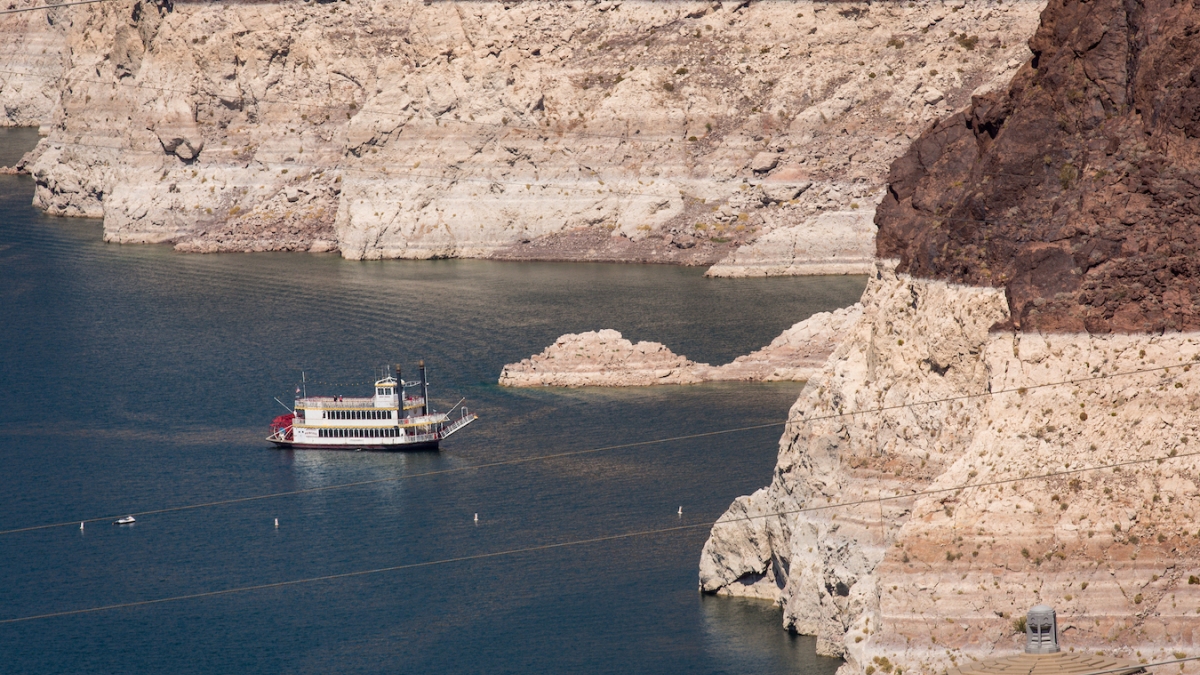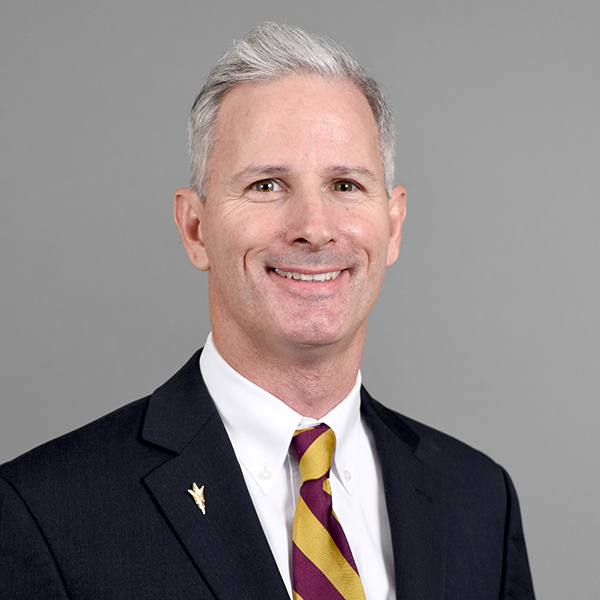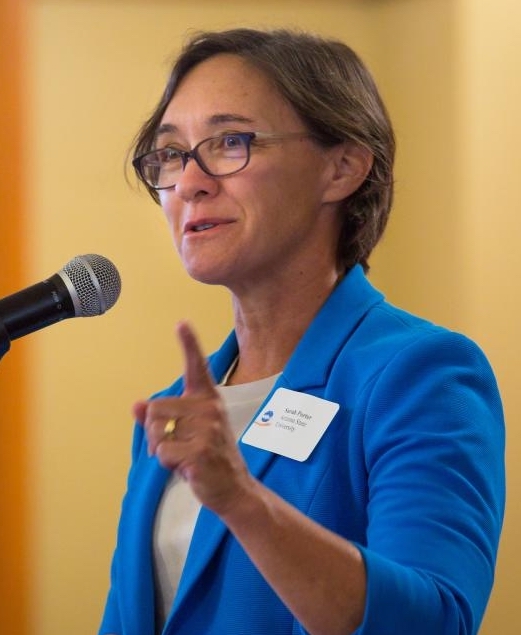A few weeks ago, Arizona State University’s Julie Ann Wrigley Global Futures Laboratory received a pleasant surprise — a $5 million surprise.
The generous gift was one of four “surprise grants” totalling $7.1 million courtesy of the Virginia G. Piper Charitable Trust, which has bestowed on the university more than $60 million since 1994.
The bulk of the latest grant money went to enable ASU to develop solutions for the state to thrive and grow through water security and climate resilience. Researchers will use the investment to develop new tools, analytics and data visualizations to measure, monitor and manage water in the region by giving decision-makers more accurate information.
Led by the Julie Ann Wrigley Global Futures Laboratory, the new research project includes the Kyl Center for Water Policy at the Morrison Institute for Public Policy and the Decision Center for a Desert City. The three entities will convene researchers, policymakers and business leaders to understand and explore solutions as Arizona’s water supply keeps dropping.
ASU News spoke with Dave White, deputy director of the Global Institute of Sustainability and Innovation, and Sarah Porter, director of the Kyl Center for Water Policy, about the grant money, what they’ll use it for and projected future outcomes.
Dave White
Question: The Global Futures Lab recently received a surprise $5 million grant from the Piper Trust. Was it a genuine surprise?
Porter: Yes — it was a very good surprise. But it makes perfect sense. President Michael Crow understands how important water resources are to Arizona’s economy, environment and quality of life, and for some time he has encouraged ASU’s water experts to help address the state’s water challenges. I think one of the best ways ASU can do that is to give people access to comprehensible and useful information about Arizona water resources and policy, and our options for future solutions.
White: It’s true that this grant was unexpected, and we are extremely grateful to the Piper Trust for this investment. ASU has a long history of successful collaboration with the Virginia Piper Charitable Trust to support use-inspired research that directly benefits the citizens of Maricopa County, and so in that regard it is not altogether unexpected. Our two organizations are very well aligned on key values to enrich health, well-being and opportunity for our local communities, and water is essential to those values.
Q: The announcement stated the bulk of the grant will go toward developing new tools, analytics and data visualizations to give decision-makers relevant knowledge. What are some of the deliverables you believe you can offer them?
Porter: With the new tools and analytics, we can create data visualizations that anyone can use to understand and plan for possible scenarios. Water policy is critical to everything in Arizona, and it’s complex. Most entities involved in water policy discussions — communities, tribes, industries, environmental organizations, irrigation districts — lack the capacity to develop models on their own. The tools we’re developing will give them access to sophisticated models of different hydrologic and policy scenarios presented in comprehensible formats. It will be empowering for them.
Moreover, there are efforts within ASU and beyond to model various components of state and regional water resources — for example, the Kyl Center is creating a data visualization tool to help stakeholders understand the impacts of Colorado River shortages in Arizona. Dave (White) is involved in modeling climate change impacts on water supply at a more regional level. One of the exciting things we can do with this grant is create a single highly integrated model of Arizona water resources.
White: Knowledge and innovation are at the core of the university, and our goal with this project is to translate that knowledge into action. Working with an interdisciplinary team from engineering, sustainability, technical communication, policy, law, design and the arts, we can offer a holistic understanding of water challenges, solutions and opportunities. By engaging people through stories, engaging and interactive visuals, we can empower them to understand the complexity of the water system in ways that connect to their own lives. We want citizens and policymakers alike to see, hear and feel water systems in a way that allows for more informed discussion — based on a common, shared understanding.
The single most important thing a member of the public can do to help is to learn about water resources and policies and participate in the water planning discussion either directly or by engaging with their elected representatives.
— Sarah Porter, director of the Kyl Center for Water Policy
Q: Accuracy seems to be what you’re getting at here. Do we not have an accurate enough picture of our water supply now, and how does this help decision-makers and the public?
Porter: While we have some data gaps, especially relating to rural groundwater, for the most part Arizona does pretty well in terms of water data, and we have outstanding people in the water agencies responsible for reporting and overseeing that information. But water planning is extraordinarily complicated because it involves so many variables of hydrology, policy, economy, etc. The grant is a game changer because it will transform all those variables into data visualizations that the user can control and understand. It will enable decision-makers and members of the public to see and delve into all the options themselves.
White: Accuracy is important, yes; and our team includes some of the world’s leading hydrologists, engineers and water system modelers. But the unique opportunity we have with this grant is to pair those scientists with storytellers, humanists and design thinkers who can help people to envision new possibilities, to imagine new trajectories and invent new technologies. Importantly, we will also be working with diverse communities, including tribal communities, to meaningfully incorporate Indigenous knowledge systems and diverse perspectives for a more holistic view of the cultural, economic, environmental, and social meanings and values of water.
Q: Speaking of the public, most people in Arizona and the West understand we’re in a severe, record drought. What else can the public do to help in solving this issue?
Porter: Of course, measures to permanently reduce water use, especially for outside landscaping, are helpful, especially at the local level. But the single most important thing a member of the public can do to help is to learn about water resources and policies and participate in the water planning discussion either directly or by engaging with their elected representatives. This is all about the kind of communities and economy Arizona will have in the future, and there should be many voices in that discussion.
White: We have a window of opportunity now, given the public attention to the issue, to spark creativity, innovation and collaboration. Water is a public resource and a public good, and it binds our communities together. Water crosses geographic boundaries and political and ideological boundaries as well. The people of Maricopa County, Arizona and the Southwest should focus on the collective benefits that clean, secure and sustainable water provides, and take this moment to lead the nation and the world toward a more resilient future. By investing in water infrastructure, supporting political leaders who focus on solutions and encouraging young people to engage, we can build up the capacity needed to rise to the challenge.
Sarah Porter
Q: You have these new tools you’ll be developing, but it seems as if no one is talking about creating an alternative water supply (i.e., desalinating ocean water for mass consumption). Will you be looking at that as well?
Porter: Oh, there’s a lot of discussion about importing new water supplies. In the 2021 session, the Arizona Legislature created a $160 million Drought Mitigation Fund to provide startup funding for statewide water-augmentation projects. Arizona and Mexico have been scoping a potential binational ocean desalination project and in April 2020 published a comprehensive analysis of the concept. Our model will integrate ocean desal and all the other options for importing new water supplies — it’s absolutely critical that we do so.
White: Coastal desalination, especially if accomplished via binational cooperation, is certainly an option for developing new water supplies. Our project will consider the full range of solutions and allow people to evaluate different solutions across a range of considerations including costs, environmental impacts and energy intensity, among other factors. This allows stakeholders to consider alternative supplies, as well conservation strategies, in relation to their own values and priorities.
Q: What excites you most about this project?
Porter: I’m very confident that we can and will create a tool that will be helpful to and useful for the state’s current water managers and policymakers. My personal hope is that the tool will also help younger Arizonans — people in their teens, 20s and 30s — participate. Arizona does water planning on very long timelines. The decisions we make in the next two decades will have ramifications for generations. I’d like to see more younger Arizonans meaningfully involved in the choices we’re making about their future.
White: As a resident of Tempe in Maricopa County, who, along with my wife, is raising my daughter in this community, this is important to me not only professionally but also personally. I have immense respect for my fellow community members — teachers, firefighters, community organizers — who work to make our city a better place for everyone. I’m proud to say that I spend my days working in my own way to secure a more sustainable, resilient and positive future for my family, our neighbors and everyone in the community.
Top photo: Lake Mead, about 25 miles east of the Las Vegas Strip, is the largest reservoir in the United States. Its water level has dropped to a record low and is now at about 35% of its capacity and continues a 22-year megadrought, according to NASA and the Bureau of Reclamation. Photo taken by Charlie Leight/ASU News
More Environment and sustainability

'Earth Day Amplified' promotes power of collective action
Everybody loves the concept of sustainability. They want to do their part, and the chance to say they’ve contributed to the well-being our of planet.But what does that actually mean?Arizona State…

Rethinking Water West conference explores sustainable solutions
How do you secure a future with clean, affordable water for fast-growing populations in places that are contending with unending drought, rising heat and a lot of outdated water supply infrastructure…
Meet the young students who designed an ocean-cleaning robot
A classroom in the middle of the Sonoran Desert might be the last place you’d expect to find ocean research — but that’s exactly what’s happening at Harvest Preparatory Academy in Yuma, Arizona.…




